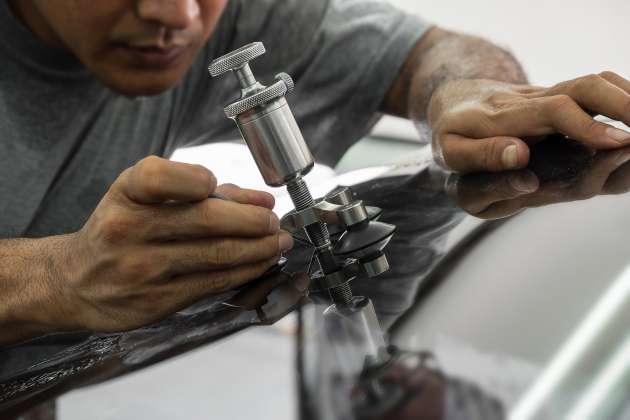Malaysians produce 38,200 tonnes of waste daily, which, in a year, amounts to around 14 million tonnes with an estimated cost in the region of RM2 billion. Glass makes up 3.3% of the total waste produced, so we are dumping 460,000 tonnes of glass that cost around RM66 million, and that includes windscreen glass, which poses a problem. While the monetary amount is a notable issue, it pales in comparison to the impact the act of disposing windscreen glass has on the environment.
But wait, why are we simply filling up our landfills with glass? Can’t it be recycled like we currently do with bottles? Well, yes, glass is recyclable, but unlike glass bottles that are made to hold beverages, windscreen glass is manufactured differently for automotive applications and is notoriously difficult to recycle and often discarded.
This is because automakers have specific requirements for windscreen glass. Besides keeping out the elements and resisting mechanical impacts, windscreen glass is also designed to break into the small pieces, or, wherever possible, remain as intact as possible when damaged to minimise injury to vehicle occupants.
If that isn’t enough, windscreen glass also plays a role in boosting the fuel efficiency of a car. Since air cooling uses a significant amount of fuel, windscreen glass is typically laminated to reduce heat build-up inside a car, minimising the strain on your car’s air-conditioning system.
As such, the process of creating laminated windscreen glass involves sandwiching an interlayer film made of a polyvinyl butyral (PVB) – a type of plastic – between two sheets of glass through a combination of pressure and heat to bond the components chemically and mechanically.
The PVB layer is what allows the glass to absorb energy during an impact, resist penetration from flying projectiles as well as reject a certain percentage of harmful ultraviolet and heat-causing infrared rays from the sun.
However, while the PVB film in laminated windscreen glass does offer a lot of benefits, the strong adhesive bond it has with glass sheets poses a major obstacle in the recycling process. This is because separating the film from the glass is not an easy task, which is why most windscreen glass ends up in landfills.
In 2021, 79.1 million cars were produced around the world. Now, if we assume that each car contains approximately 13 kg of glass and 1 kg of PVB film, the total amount of windscreen production would result in approximately 1.028 billion kg of glass and 79 million kg of PVB film. That’s a lot of waste that will inevitably end up in landfills, further harming the environment and endangering wildlife.
As such, a conscious effort must be made to reduce the amount of windscreen glass waste produced, which is exactly what Berjaya Sompo is doing. As part of its ESG (environmental, social and governance) initiatives, the insurance provider is committed to environment and climate change efforts that are in line with the UN Sustainable Development Goals.
With the support of Malaysia’s Department of Environment and working together with its windscreen panel companies nationwide, Berjaya Sompo is aiming to lessen the negative impact of wasteful windscreen glass dumping and wants to encourage users to prioritise repairing their windscreen rather than simply disposing them at the slightest crack formed.
One of the benefits of windscreen repair compared to replacement is the amount of time saved, as repairing chipped windscreens can take as little as 30 minutes. This quick and easy fix allows you to get back on the road sooner, which isn’t always the case with replacements.
A repaired windscreen means one less non-recyclable glass being sent to the landfill, which is a good thing for the environment. You’ll also save money as repairing is by and large a lot cheaper than a complete replacement.
Repairing your windscreen is also good for your safety, as an unassuming chip can unexpectedly become a full-fledged crack leading to small glass shrapnel forming which can injure passengers. Chips or cracks that are located more than 7 cm from the edge of a windscreen can usually be repaired, provided the chip is no larger than 28 mm and the crack is no longer than 76 mm.
To better enlighten the public on the environmental issue of windscreen waste and to promote windscreen repair, Berjaya Sompo is inviting everyone to the Windscreen Repair Roadshow scheduled to take place from June 15-19, 2022, at the Oval Concourse in 1Utama Shopping Mall.
At the event, visitors will be able to learn more about windscreen repair and even witness live demonstrations of the process, with free windscreen repair services available for the public and all its policy holders. There will also be exciting games and activities at the roadshow, with amazing prizes to be won.
Head over to Berjaya Sompo’s official website to find out more about the Windscreen Repair Roadshow and how you can do your part for the environment. We only have one planet, and there’s no replacing it when it’s damaged beyond repair.











